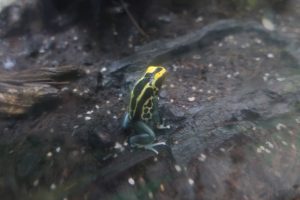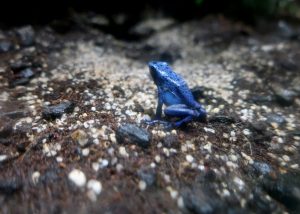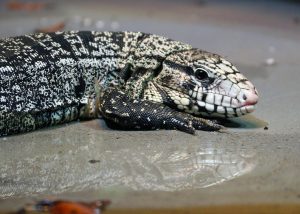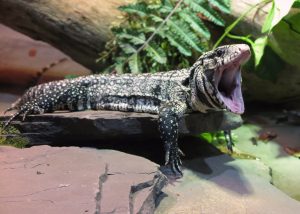5 Things I Learned about Vietnamese Mossy Frogs
Native to North Vietnam, these mossy frogs live in flooded caves and in the banks of rocky mountain streams. A semi-aquatic species, they spend a significant amount of time submerged with only their eyes poking out over the surface of the water.
Sometimes it can be a challenge to spot the Vietnamese mossy frogs in Greater Cleveland Aquarium’s Asia & Indonesia Gallery. They only grow to be 2.5 to 3.5 inches and they’re flat and wide when resting. Wart-like bumps and green-and-ruddy brown skin give them a moss-like appearance and let them blend with their habitat.
Not only are they masters of camouflage, but they’re also masters of misdirection. Vietnamese mossy frogs can make their voices seem like they are coming for 10 to 13 feet away so predators cannot pinpoint their locations.
Vietnamese mossy frogs have sticky toe discs that help them climb trees and cling to rocky surfaces.
Even with excellent camouflage, climbing abilities and ventriloquist-level vocal skills, predators sometimes track down mossy frogs. When threatened by tree-dwelling mammals or snakes, Vietnamese mossy frogs will curl into a ball.
Next time you visit, see if you can spot the mossy frogs blending in with their surroundings. Nature. It’s curious thing.
- Samantha F.




